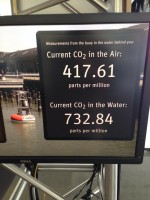Widgetized Section
Go to Admin » Appearance » Widgets » and move Gabfire Widget: Social into that MastheadOverlay zone
Economics, Environment and Equity
A Multidimensional Approach to State Energy Policy
The views expressed are those of the author and do not necessarily reflect the views of ASPA as an organization.
By Benjamin Deitchman
April 14, 2015

State level energy policy in the United States has the potential to reshape resource consumption through mechanisms that advance innovative technologies, support broad economic development goals and protect fragile natural environments. The energy challenges today are wicked problems. They lack simple, correct solutions to the on-going issues requiring action under conditions of uncertainty.
The Intergovernmental Panel on Climate Change (IPCC) describes the scientific consensus on the global anthropogenic causes and global risks to the health, welfare and economy of the planet and human society from energy consumption of carbon-emitting fuels. The additional dimensions of energy prices and energy security add to this global challenge beyond just the environmental impacts.
Paul Hirsh and Bryan Norton, borrowing from Aldo Leopold’s philosophy of natural systems, argue that climate change and energy policy require policymakers to be “thinking like a planet,” working outside traditional geopolitical boundaries. Achieving meaningful action in America is institutionally vexing but also a significant opportunity to improve the status of political leaders, the functionality of federalism and maximize benefits and co-benefits of stringent and effective public policies.
In the wake of the global financial crisis and the difficulty of generating enough high-quality middle-class jobs, employment has become a defining issue in states and localities across the country. While many communities have turned to hydraulic fracturing and other extraction industries to improve local economic conditions, the opportunity to promote and develop energy efficiency and renewable energy resources exists across the United States. The green economy and green jobs are a key co-benefit of actions to mitigate climate change and promote the deployment of clean energy resources.
Economic competition considers the idea that localities and states, with federal cooperation, aim to formulate effective policy at the most appropriate institutional level while competing with one another in the political, policy and economic development marketplaces.
Governors play a critical role at the state level. A rigorous analysis of the 536 State of the State speeches between 2001 and 2012 found support for clean energy initiatives within 207 of the speeches (39 percent). Renewable energy topics appeared in 129 speeches, while energy efficiency only received agenda setting mentions in 72 speeches. Energy efficiency and renewable energy encompassing “clean energy” received 50 mentions. Climate change efforts appeared 84 times in gubernatorial state of the state addresses over the 12 years of analysis.
Consistent with the broader public policy dialogue, as a discussion point “green jobs” didn’t appear until 2008 but received 17 mentions over the next several years. Although Democrats addressed these issues more often than Republicans, economic, environmental and equity concerns of energy policy appear throughout these speeches.
There are multiple stakeholders and multiple functions in energy policy. A survey of 884 energy professionals found a desire for a balanced approach on the goals of energy supply security, environment and climate and economics and job creation. The study notes that among the general public “Americans can simultaneously have a preferred policy goal and support policies that may undermine that goal,” indicating the difficulty of climate and energy policy in meeting multiple critical challenges.
With rare exceptions, such as the oil supply disruptions from Hurricane Katrina in 2005 or the Northeast Blackout of 2003, Americans generally expect that their gas station will have fuel and the lights will go on when they flip the switch. The price of gasoline in the United States can vary based on geopolitical events and the financial situation, but energy is reliable and affordable compared to developing countries or nations with scarcer resources and higher sumptuary taxes. The expansion of natural gas exploration and energy assurance issues from accidents, natural disasters and utility deregulation, however, are still a backdrop in the current primarily fossil fuel based economy.
State elected and administrative leadership have the opportunity to adopt and implement policies to serve a variety of societal needs. Energy impacts virtually every function of modern life; even water usage is intertwined with energy production and consumption. Federal inaction on climate change and 21st century energy technologies has facilitated a state role in this policy domain.
The federal government is an enabler of this system not just in its own failures to pass comprehensive (or even partial) legislation on climate change, but also as a purposeful strategy. Washington learns from the states and when leaders in Washington recognize their shortcomings or want to oppose their own status quo, the states and localities are a venue for dissent and to create new opportunities. The opportunities are there for states to act on energy and climate.
Author: Benjamin H. Deitchman is visiting assistant professor of public policy in the Saunders College of Business at the Rochester Institute of Technology. He earned a doctorate in public policy from the Georgia Institute of Technology and holds a master’s of public administration degree from the George Washington University. You can email him at [email protected] and/or follow him on Twitter: @BHDRIT.


Follow Us!